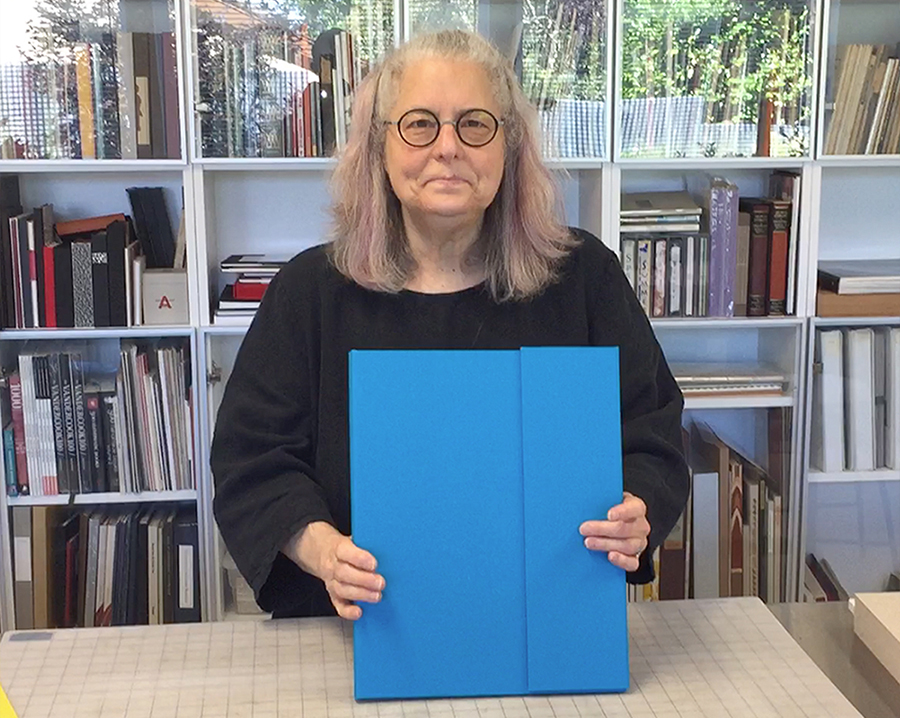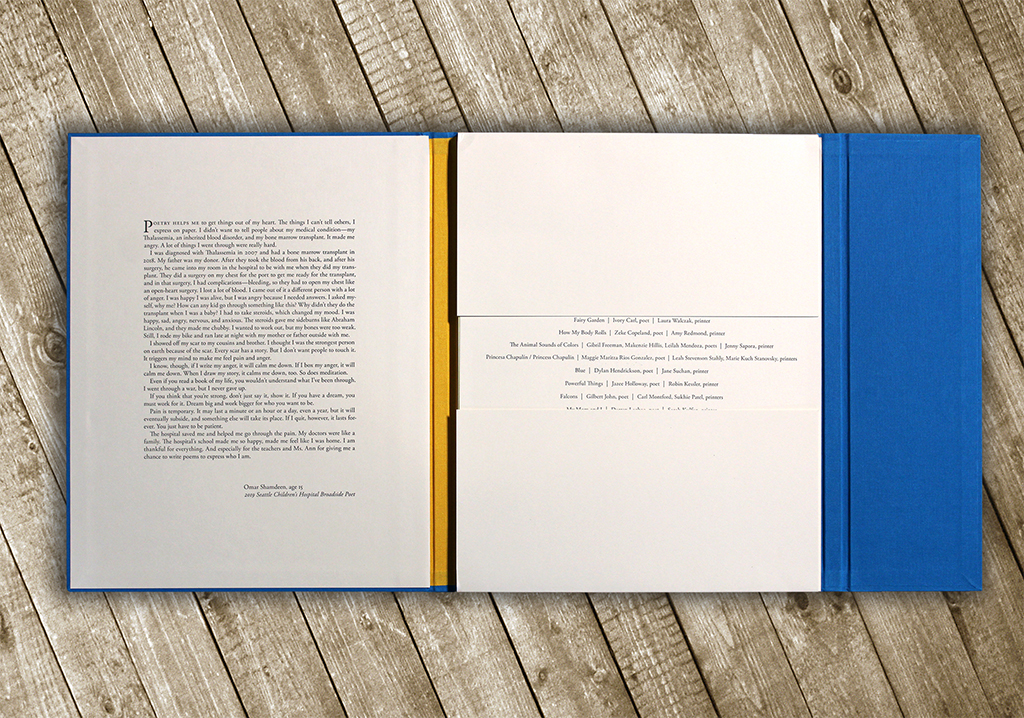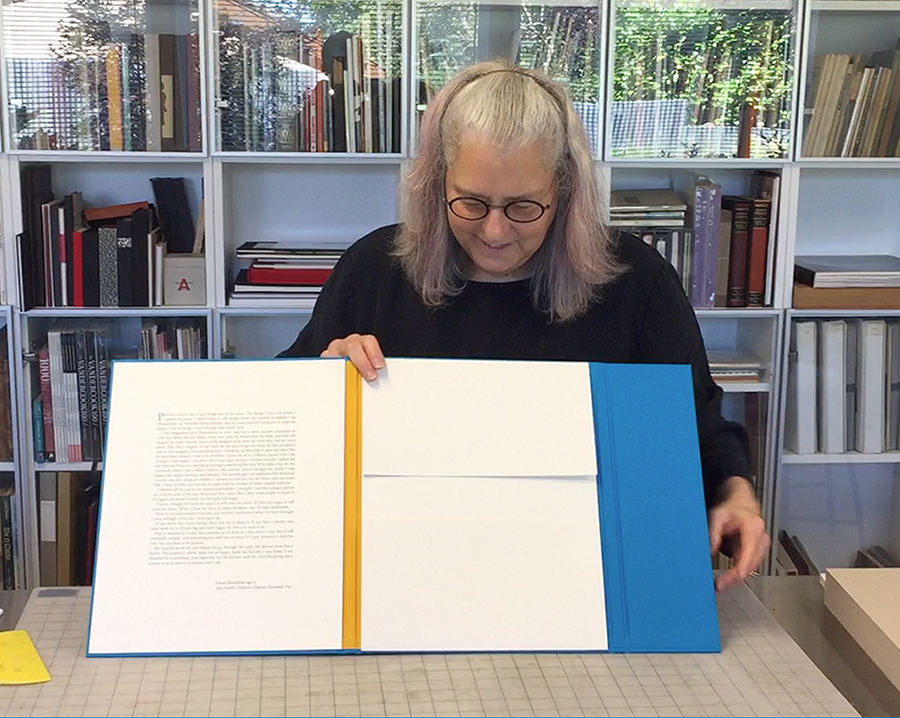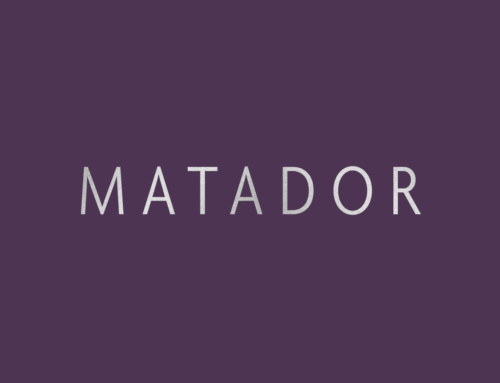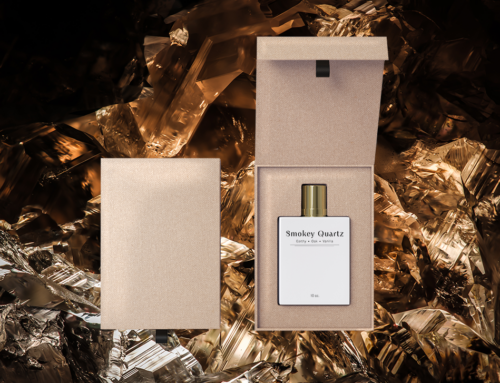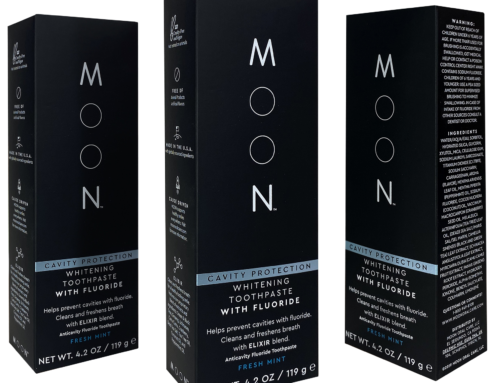Seattle Children’s Hospital Letterpress Broadside Project Highlight
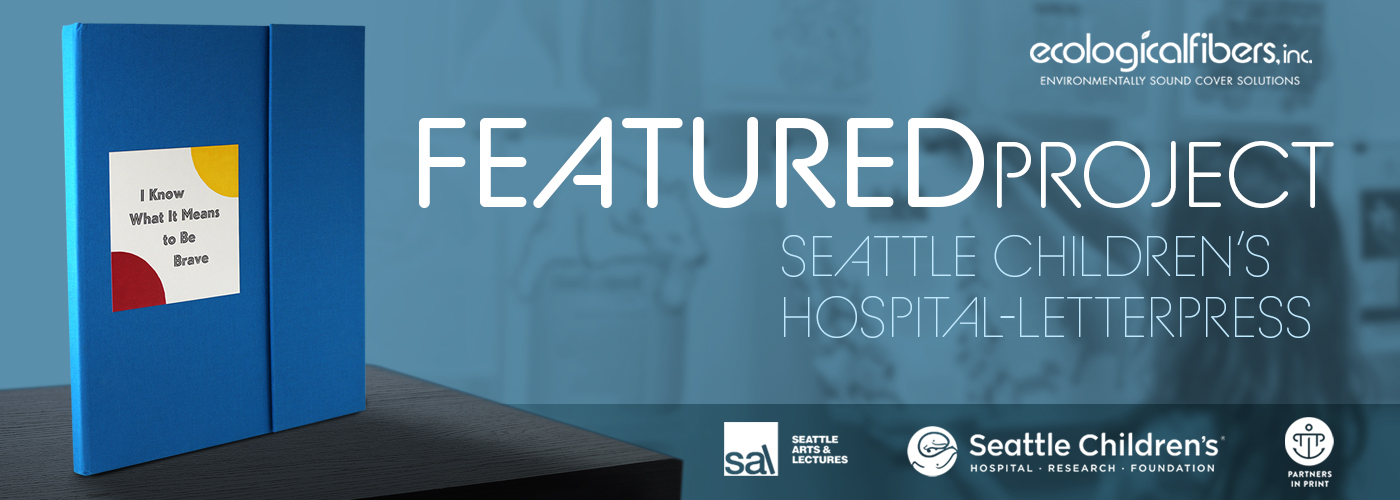
A Decade of Collaboration
10 years ago, Ecological Fibers was approached to see if we would be willing to donate our materials for an inspiring new project.
A collaborative group consisting of The School of Visual Concepts’ (SVC) Letterpress Program, Seattle Children’s Hospital, and the Seattle Arts & Lectures’ (SAL) Writers in the Schools (WITS) program were looking to handcraft a small batch of specialty portfolios using our woven Brillianta® book cloth. Each portfolio would house a collection of poems written by long-term patients of Seattle Children’s Hospital with the help of WITS writers in residence Sierra Nelson and Ann Teplick. Through the SVC Letterpress Program, the poems would be illustrated, designed and printed in a limited quantity by local letterpress printers.
We were honored to be considered and were more than happy to help contribute to such a touching project. With that, a decade-long partnership was formed.
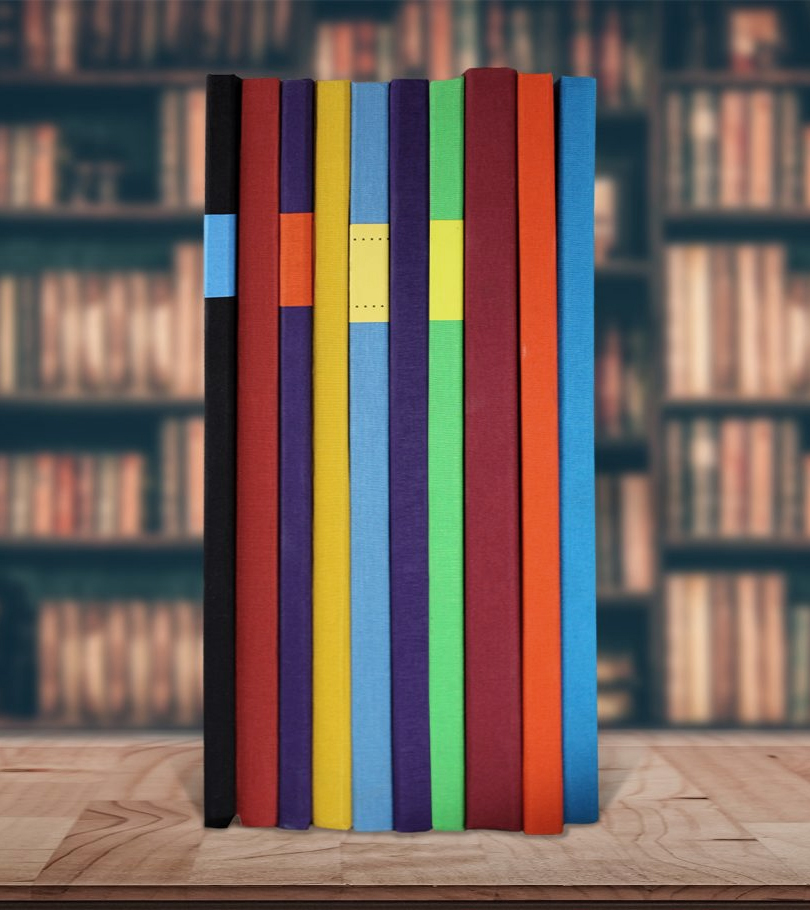
HOW IT CAME TO BE
Soon after beginning their time as WITS writers in residence, Nelson and Teplick amassed a large collection of poetry from the patients at the Children’s Hospital. These works perfectly encapsulated their mission and provided an incredible outlet for the patients, but it also inspired the duo. They wanted to use the opportunity to elevate this creative outlet, provide heartfelt mementos to the patients’ families, and showcase the pieces at local exhibitions as a way to properly memorialize the poems. There, the basis of the project was formed.
Jenny Wilkson, the Director of the School of Visual Concepts’ (SVC) Letterpress Program and Partners in Print, and Bonnie Thompson Norman, one of the project’s letterpress printers, as well as book binder, book artist, and proprietor of The Windowpane Press, recently took the time to tell us more about this annual project.
The Portfolio Design
Since the first edition 10 years ago, the style and design of the portfolios has evolved significantly. From the original magnet-clasped case, to ribbon-bound flaps, the passion and attention to detail is clear in every new edition. But as the project has changed over the years, so too has the idea that a more simplistic portfolio design would allow for more attention to be spent focused on the contents within.
This year’s design boasts a striking Azure 4012 Brillianta® woven cloth with a ⅓ flap on the right side clasping the cover closed. Standing out boldly on the central left side of the cover is a letterpress printed label with a dotted design and printed with “I Know What It Means To Be Brave” which acts as a very appropriate title for the 2020 collection of publications.
The flap opens to unlock the portfolio, and the remaining cover swings open to reveal the freestanding title card in the central panel, as well as the beautifully written introductory essay from 15-year-old Omar Shambeen on the left. A bold splash of Yellow 4031 Brillianta® separates the columns and adds a wonderful bit of contrast to the design.
“I was very familiar with Brillianta®. I like the colors, I like the cloth, the color combinations can be very cheerful. There were points in which I thought about stamping and it would work for that as well.”
~Bonnie Thompson Norman
Binding and Portfolio
Design Co-Lead
The choice to host these letterpress-printed poems in a woven cloth portfolio provided a perfect synthesis of classically intimate styles and design techniques.
“These poems needed letterpress and these beautiful portfolios because they mean so much more than a photocopy or a print out of the poem ever could,“ said Wilkson, “doing it in this mode of reproduction, where there is so much intention, it is limited edition by nature, the actual work itself becomes more tactile. It’s just that much more special in this format.”
What It’s All About
THE PATIENTS
There is power in print. In art. And getting lost in your craft can allow for an opportunity to escape reality, if only for a brief moment in time.
“The quote that Sierra gave which I think is really powerful is ‘a sense of self in a medical setting is eroded. You can’t envision yourself beyond your medical diagnosis,’” said Wilkson, “being able to write poetry, and to see that poetry be published allows them to reenvision themselves as poets… And published poets! That’s where the real power comes from.”
The finished works are equally as important to the families. ”Almost every year, some of the poems come to us, and the young poets have already passed away,” said Norman, “but the parents have something that was produced and created specifically with their child’s words.
“I printed a poem for a child one year and I went to their 16th birthday party. When he unwrapped his framed copy of his broadside, he teared up. It was just beautiful. It really felt good to me, but his family loved it too. This project has a real reach for everybody that is involved,” continued Norman.
WHAT IT MEANS TO US
This project is one of hope and perseverance through adversity. It projects the strength that comes from a community which is determined to help and support one another through difficult times.
From the artistic outlet that is now available to the patients of Seattle Children’s Hospital which allows them to break free from their hospital beds and offers them the chance to see their impact as published poets, to the support of a community that, through turbulent and uncertain times, is willing to donate their time and resources to see this project through. This truly is a work of unbridled passion and optimism.
This project represents the devotion and community behind the historic professions of letterpress printing and hand-binding as it continues to enhance the words of these poets in an extraordinarily intimate way. It encapsulates the synchronism of these unique crafts and arts which have an unprecedented ability to bring people together for the greater good.
We are exceptionally proud to have been able to play a part in such an inspirational project, and we look forward to doing so for many years to come.
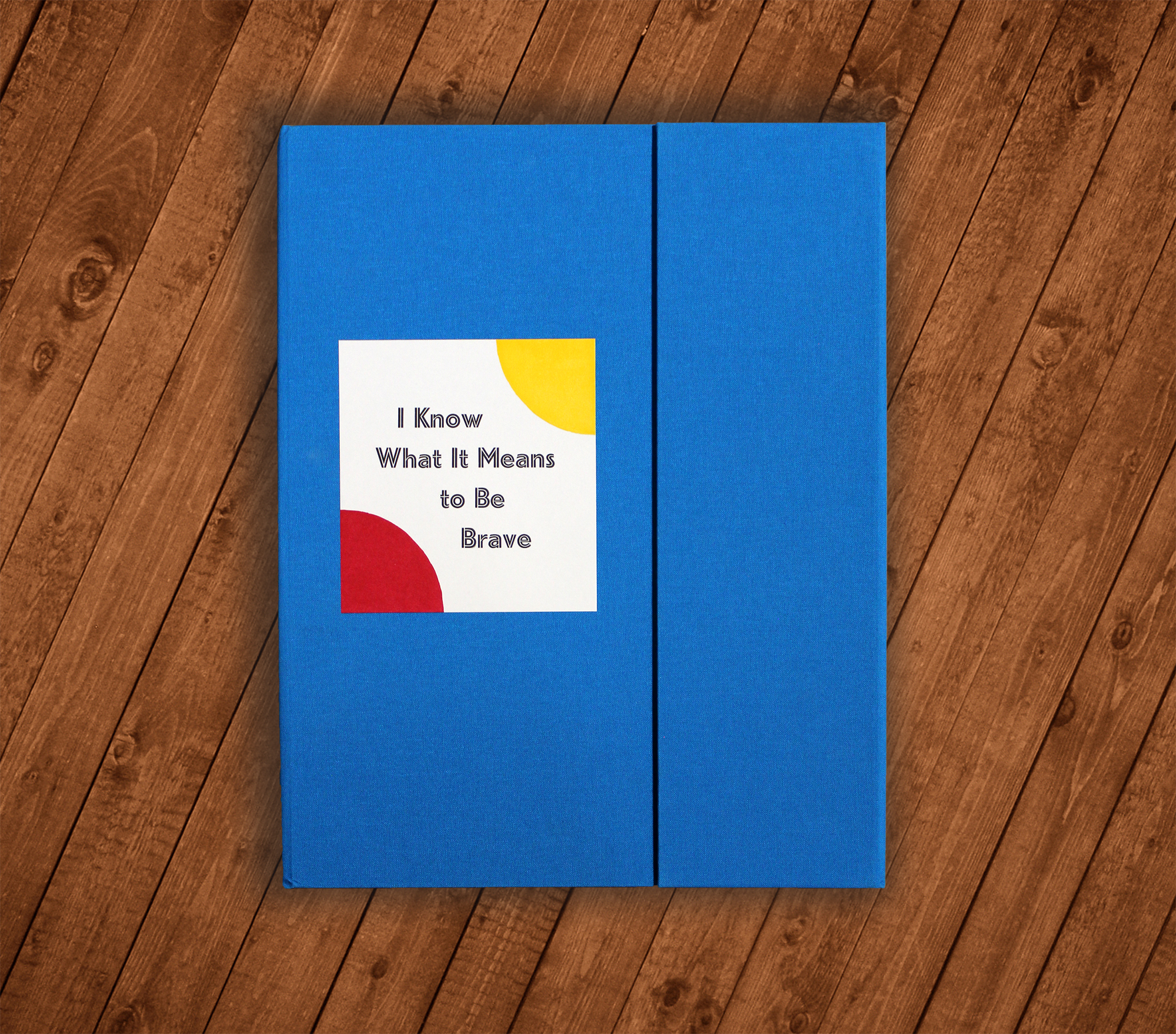
The Annual Process
THE POEMS
Every January, the two writers in residence, Nelson and Teplick, get together to choose the 20 poems which will be featured in the upcoming edition. After obtaining the family’s approval, Wilkson puts out the call to local letterpress printers to see who will be working on the project that year.
“We have a group of core people who have been participating from the beginning,” said Norman, “and speaking for myself, it is always a very moving thing to participate in.”
THE PROJECT BEGINS
Once Wilkson has chosen her printers for the year, a meeting is held, and the poems are read aloud to the group along with a small bit of information about each patient and their respective medical conditions.
“It’s a really lovely process. The poems are a way for these poets to transport themselves out of the hospital setting, and we always have to have a box of tissues out when we do the readings,” said Wilkson, “from there, we very politely and graciously choose which poems will go with which artist.”
The printers are then given until May to design, revise and complete their individual broadsides. Once the finished prints are compiled, Norman and fellow letterpress artist and binder Jules Remedios Faye will alternate the responsibility of designing the portfolios and leading the instructional binding process every year.
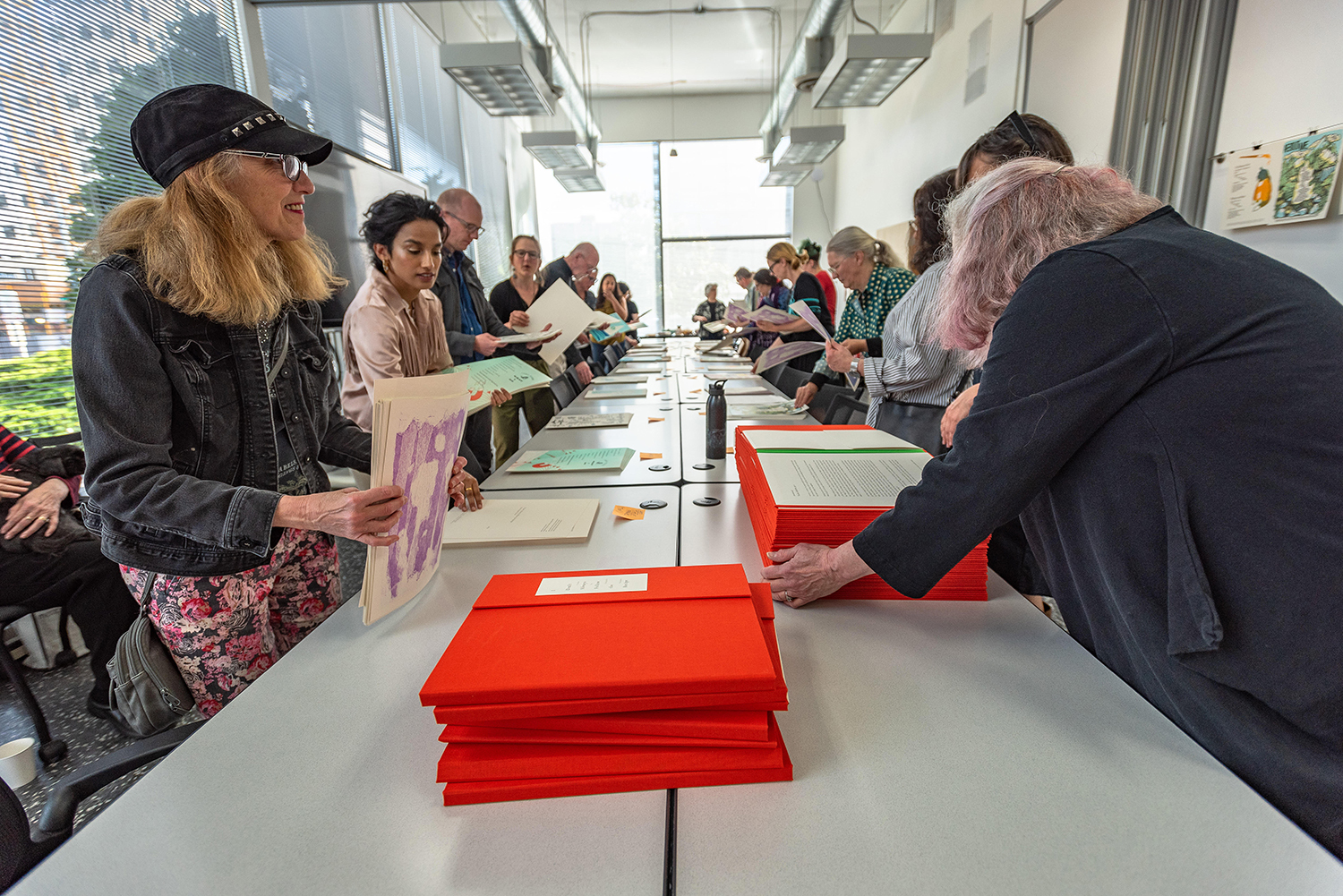
BINDING
With varying levels of expertise and years of experience, the Seattle Children’s Hospital Broadside Project grants these letterpress printers the opportunity to either build upon their limited binding skills, or to gain a foundation in a step of the process that they might not have otherwise had the opportunity to explore.
“From the original core group, their skills at binding have really improved incredibly,” said Norman, “some of the newer artists have never done any binding before. But even if they had, none of them had done edition binding.”
“Whatever Bonnie tells us to do, we do,” added Wilkson, “she gives us the template, teaches us how to correctly apply the glue and put everything together. It has been a great learning tool for the printers.”
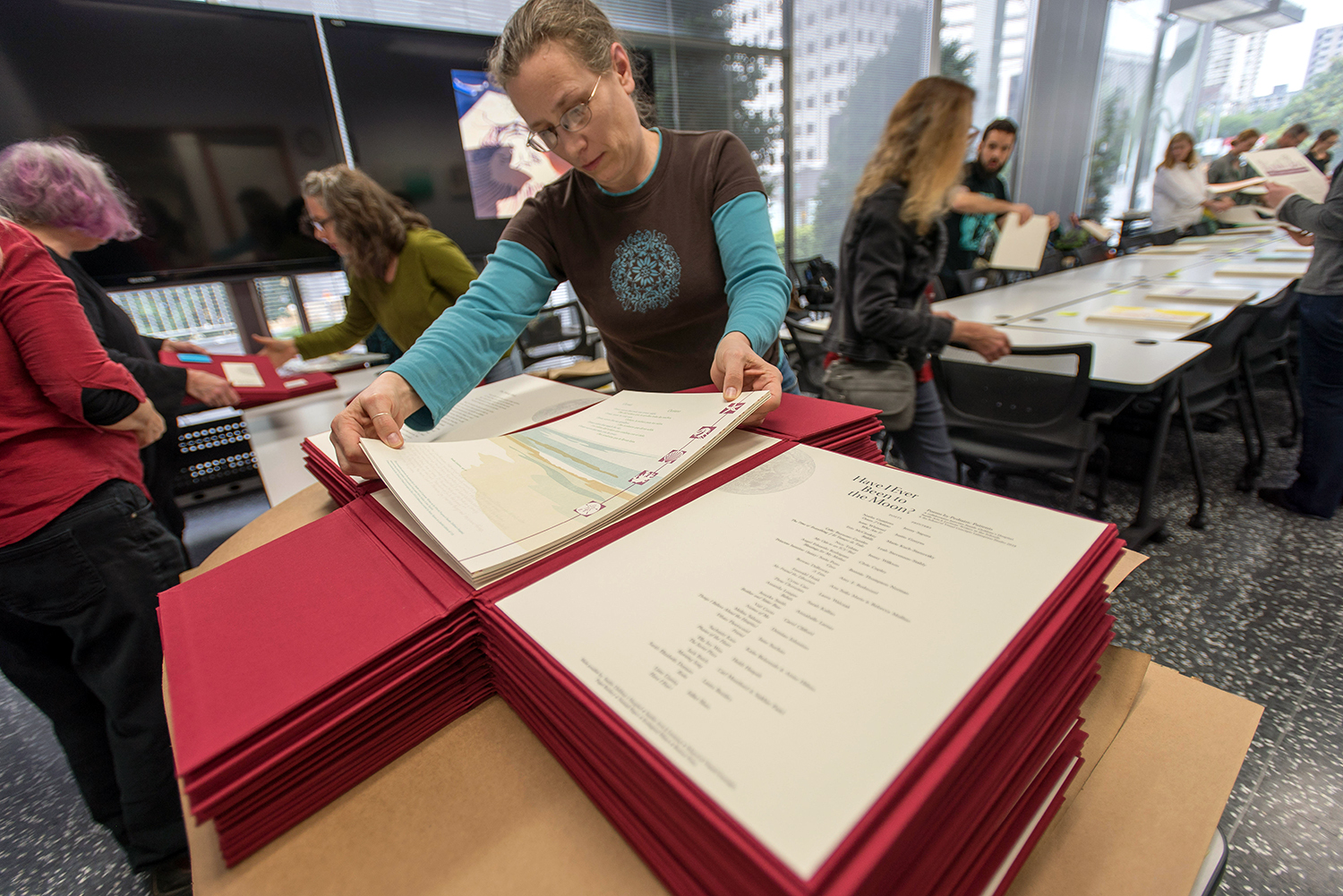
2020 CHALLENGES
In a typical year, the group will gather weekly to hand-bind the portfolios, but 2020 was no typical year. The Covid outbreak drastically limited the group’s ability to meet in person and access the tools necessary to prepare the materials for this year’s build. But this project was determined to persist.
“Puget Bindery typically donates their time for creating the scores for the flaps,” said Norman, “this year in particular, we were all forced to stay at home. They very kindly cut all the material and cloth for me and delivered it. They went above and beyond what they have in the past and I heap loads of praise on them.”
As a result of Covid-19 restrictions and the inability to meet in a group, Norman took it upon herself to single-handedly bind each of the portfolios for the 2020 campaign.
Post-Completion
Once the copies are completed, the portfolios are then given out to the families. Finished editions will also be offered to each printer, the donors who have played a part in providing resources or materials for the project, and Seattle Children’s Hospital who put them on display in the hallways and will use them as Big-Ticket items at fundraising events.
Every May, Seattle Arts and Lectures (SAL) has a year-end reading where the broadsides will be showcased. They will also be featured at all SAL events throughout the remainder of the year.
The portfolios can also be seen moving between various Seattle public libraries throughout the year and are shown for a limited amount of time in the community gallery at the Seattle Art Museum. “It’s like a traveling exhibition,” said Wilkson, “the reach of these broadsides is actually really huge.”
The cycle will then start over again in January.
The Letterpress Community
As well as an amazing opportunity to provide these young poets and their families with gifts to be treasured for years to come, this project also offers a unique experience for the letterpress artists to collaborate, practice and grow their craft in a meaningful way.
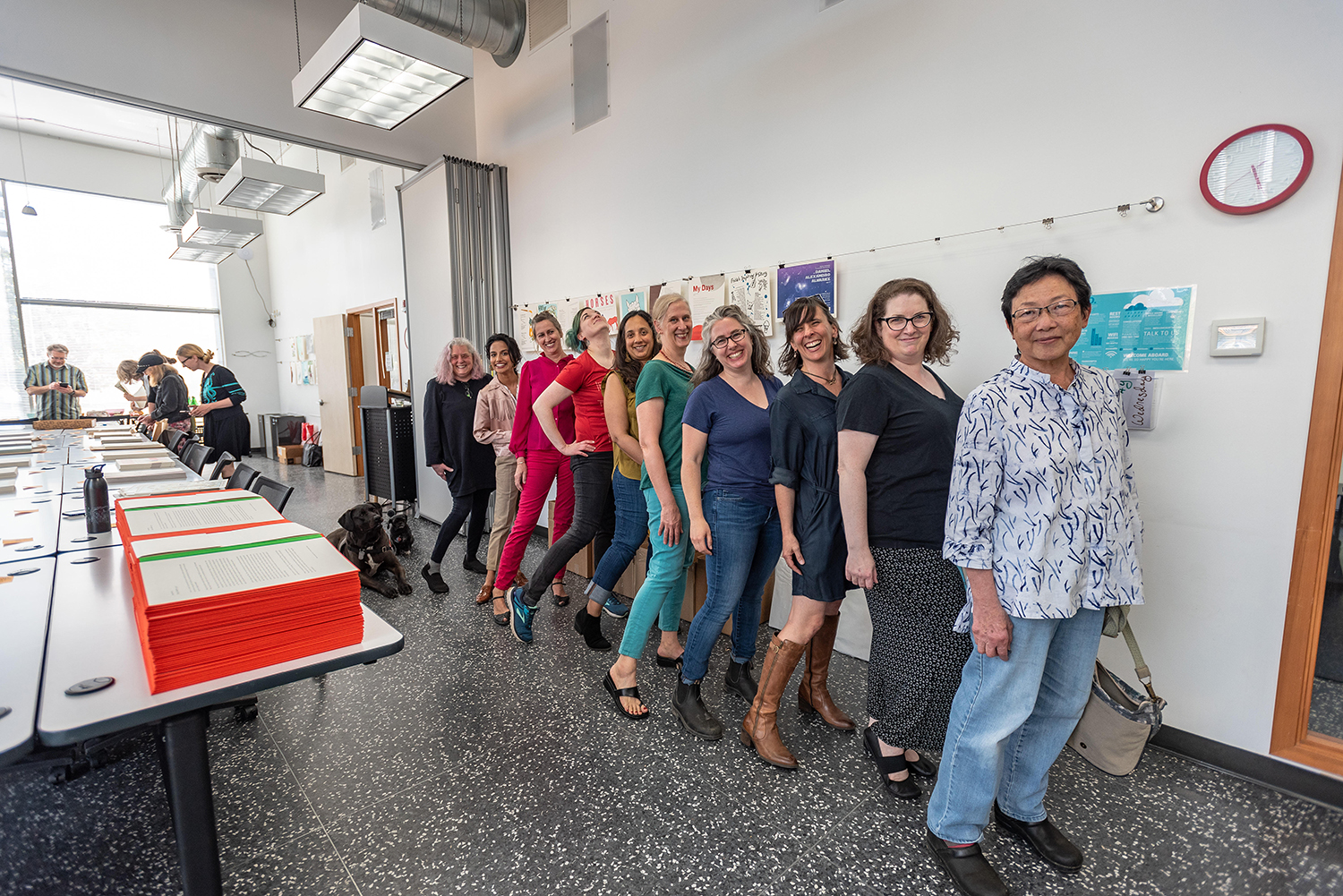
“The caliber of this project pushes people. And the fact that it happens every year means that we’re all learning from each other. When you can put your presses to use in the world where they do good in the community, it’s going to serve to amplify all of us,” said Wilkson.
“It’s an amazing opportunity to play because there is a very strong visual component to these poems,” added Norman, “everybody has their expertise but they’re always pushing it further.”
What the Future Holds
Unfortunately, due to Covid, the School of Visual Concepts’ Letterpress Program was forced to adapt. Wilkson successfully applied for fiscal sponsorship and the program is now recognized as the organization Partners in Print as of October 1st. This will allow the letterpress program and the Seattle Children’s Hospital Broadsides Project the opportunity to continue on into the future for years to come.
“This project is the reason why I founded Partners in Print, so we can continue to do collaborations like this that keep our community together. It was extremely transformative for the SVC’s Letterpress Program, and it’s the reason why we’ve persisted through 2020,” said Wilkson.
Wilkson notes that her ultimate goal is for this project to act as a template for national expansion, and to empower other communities to follow suit. “It would be really special to see this grow outside of just Seattle,” she concluded, “it’s a really powerful formula.”
What it Means to the Artists
Bonnie Thompson Norman:
I love poetry. Sometimes I’ll read a line of poetry and just break into tears. The poetry that reaches to me articulates my thoughts and feelings and makes it feel universal and shared. Being able to relate to that and knowing that these are young people that wrote these poems and knowing that their life experiences are so much deeper and more challenging than anything that I have ever faced resonates and broadcasts courage and heart and soul.
They really are very moving and even knowing just a little bit about our poets makes us feel a very close bond with the poems and the poets, even though we may never ever meet them. We usually do not. And we usually know little to nothing about them except for their poem, but we know that it matters, and so it matters a great deal to us.
Jenny Wilkson:
Writers in residence get put into various public schools and they work with patients and help them express themselves through poetry. Seattle Children’s Hospital is one of the few programs that have writers in residence working with pediatric patients. It’s very special. So, the fact that pediatric patients are writing these poems, it becomes much more powerful, transportive.
I feel like this project is the reason why, even after Covid and after everything that has happened to our community, losing our community shop, being unable to gather, it has given us a really meaningful reason to persist as a community.

